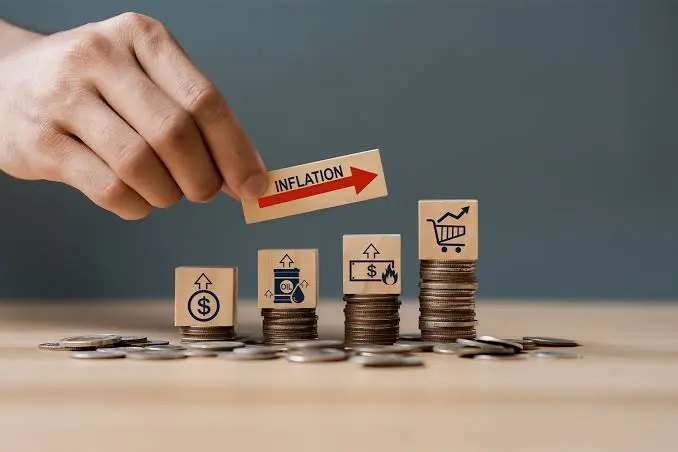What Is the Meaning of Agflation?
Agflation is an economic term that describes a situation where food prices increase more rapidly than the prices of other goods and services. This phenomenon arises when the demand for agricultural products—such as grains, fruits, and vegetables—outpaces supply, leading to higher costs for consumers. The term “agflation” is a blend of “agriculture” and “inflation,” highlighting its focus on the agricultural sector’s impact on overall price levels.
Understanding the Causes of Agflation
Several factors contribute to the occurrence of agflation:
1. Increased Demand for Food
Global population growth and rising incomes in developing countries have led to higher demand for food. As more people enter the middle class, their dietary preferences shift towards higher-protein foods like meat and dairy, which require more grain for production. This increased consumption puts pressure on food supply chains, driving up prices.
2. Use of Crops for Biofuels
The growing use of crops such as corn and sugarcane for biofuel production has diverted agricultural resources away from food production. Policies promoting renewable energy sources, like the U.S. Energy Policy Act of 2005, have incentivized the conversion of food crops into ethanol, reducing the availability of these crops for human consumption and increasing their prices.
3. Climate Change and Weather Events
Adverse weather conditions, including droughts, floods, and extreme temperatures, can damage crops and reduce yields. For instance, the 2007-2008 world food price crisis was partly attributed to poor harvests caused by unusual weather patterns. Such climatic events disrupt supply and lead to higher food prices.
4. Export Restrictions and Trade Policies
Countries that are major food exporters may implement export restrictions to ensure domestic food security, especially during times of scarcity. For example, Russia’s ban on grain exports in 2010 due to forest fires and drought led to a surge in wheat prices globally.
5. Speculation in Agricultural Commodities
Financial speculation in agricultural commodities can drive up prices beyond what is justified by supply and demand fundamentals. Investors seeking to profit from price fluctuations can create volatility in food markets, contributing to agflation.
The Impact of Agflation on Economies and Consumers
Agflation has significant implications for both economies and individuals:
1. Increased Cost of Living
As food prices rise, households spend a larger portion of their income on groceries, leaving less for other goods and services. This can lead to a decrease in overall living standards, particularly for low-income families who already allocate a substantial share of their budget to food.
2. Food Insecurity
In developing countries, where a significant portion of the population relies on agriculture for their livelihood, agflation can exacerbate food insecurity. Rising food prices may make it difficult for individuals to afford sufficient nutrition, leading to malnutrition and related health issues.
3. Inflationary Pressures
While central banks often exclude food prices from their core inflation measures due to their volatility, persistent increases in food prices can influence overall inflation. If agflation continues, it may prompt policymakers to adjust interest rates or implement other measures to control inflation.
4. Social Unrest
Prolonged periods of high food prices can lead to social unrest, particularly in countries where food constitutes a large part of household expenditure. Protests and demonstrations have erupted in various nations in response to rising food costs, highlighting the social and political dimensions of agflation .
Mitigating the Effects of Agflation
Addressing agflation requires a multifaceted approach:
1. Sustainable Agricultural Practices
Promoting sustainable farming techniques can increase crop yields and reduce the environmental impact of agriculture. Practices such as crop rotation, organic farming, and efficient water use can help stabilize food production and prices.
2. Diversification of Food Sources
Encouraging the cultivation of a diverse range of crops can reduce dependence on a few staple foods, making food systems more resilient to shocks. This diversification can also provide consumers with more affordable options.
3. Investment in Agricultural Technology
Advancements in agricultural technology, such as precision farming and genetically modified crops, can enhance productivity and reduce costs. Governments and private sectors should invest in research and development to drive innovation in agriculture.
4. Trade Liberalization
Reducing trade barriers and promoting free trade can help stabilize food prices by allowing countries to import food when domestic production is insufficient. However, this approach requires careful consideration of domestic agricultural policies and food security concerns.
Frequently Asked Questions (FAQs)
Q1: What is the meaning of agflation?
Agflation refers to the phenomenon where food prices rise more rapidly than the prices of other goods and services due to increased demand for crops used both for food and biofuels.
Q2: How does agflation differ from general inflation?
While general inflation encompasses a broad increase in prices across various sectors, agflation specifically pertains to the rapid rise in food prices driven by factors such as higher demand, climate change, and the use of crops for biofuels.
Q3: Can government policies influence agflation?
Yes, government policies can impact agflation. For instance, subsidies for biofuel production can increase demand for certain crops, contributing to agflation. Conversely, policies promoting sustainable agriculture and trade liberalization can help mitigate its effects.
Q4: What are the social implications of agflation?
Agflation can lead to increased food insecurity, particularly in developing countries, and may contribute to social unrest as rising food prices strain household budgets and exacerbate poverty.
Q5: How can consumers cope with agflation?
Consumers can mitigate the impact of agflation by diversifying their diets, reducing food waste, and supporting local agriculture. Additionally, governments can play a role by implementing policies that stabilize food prices and ensure food security.
Conclusion: Navigating the Challenges of Agflation
Agflation represents a complex challenge that intertwines economic, environmental, and social factors. Its impact is felt most acutely by vulnerable populations, underscoring the need for comprehensive strategies to address the root causes. By investing in sustainable agricultural practices, promoting food diversification, and implementing thoughtful policies, societies can better navigate the challenges posed by agflation and work towards a more stable and equitable food system.

